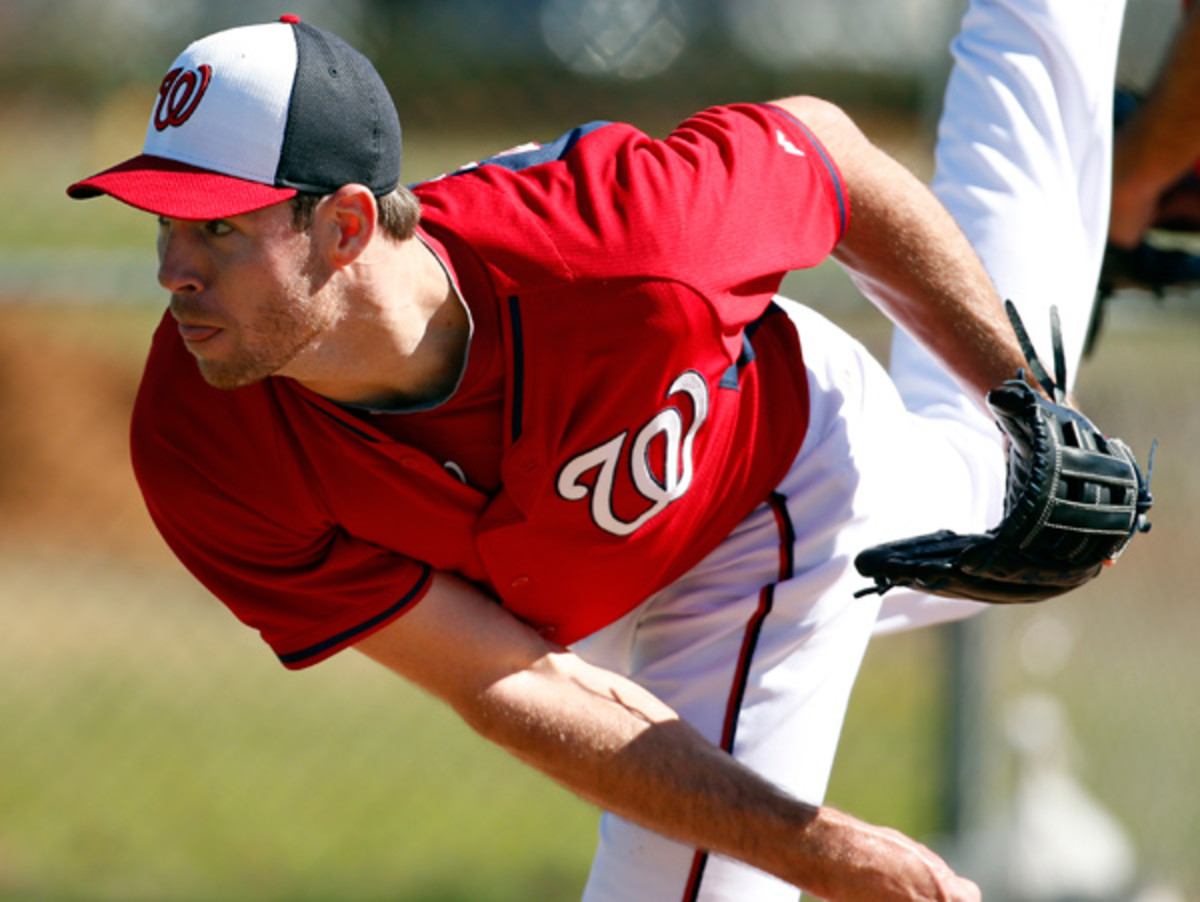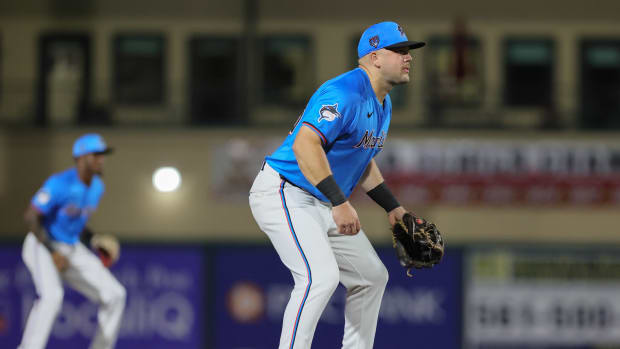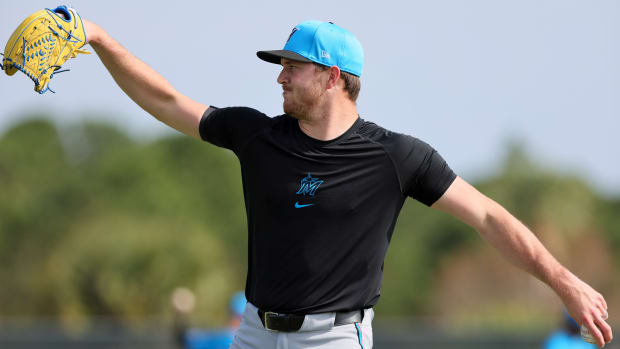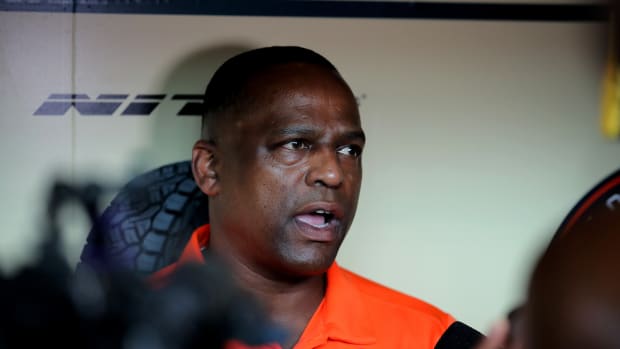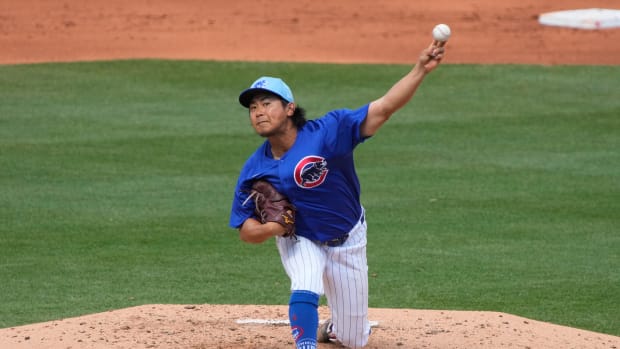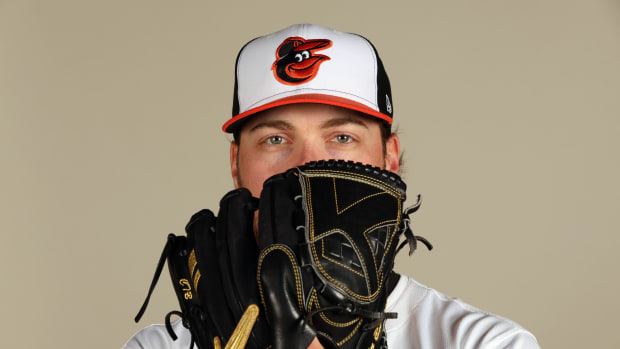Booms and Busts: Starting pitchers
Doug Fister could be in for a career season with the Nationals. (Alex Brandon/AP)
Late last month, I kicked off my second go-round of Booms and Busts, in which I highlighted a small handful of players at a given position whom I expect to take significant steps forward or backward. I have no hard-and-fast criteria for those players, no promises of fantasy league dominance or skyrocketing statistics for the Booms or slides below the Mendoza Line for the Busts. But between poring over projections, identifying players in changed circumstances such as trades, new roles, recoveries from injury, or entries into the prime age range of 26-29 years old, there are players I’d like to earmark before the season begins, for better or worse.
Note that I won’t be including rookies among these picks — those will be saved for another cycle — and I've mostly avoided choosing anyone from among last year’s picks. In the spirit of accountability, I’ve revisited last year's picks at each position, to see what I’ve learned (or haven’t); they’ve been judged on a PASS/FAIL basis as to whether I was right or wrong. Given my success at other positions, looking back at my starting pitchers from last year is a humbling experience, as I had more wrong than at any other position and was spectacularly off base about two pitchers who played major roles in their teams shaking off long losing streaks. We'll get 'em this time...
BOOMS
Doug Fister, Nationals: From here, the trade that sent Fister from Detroit to D.C. looks like a steal, as he's been one of the game's top dozen starters over the past three years in terms of WAR (12.6) and ERA+ (124). Following Edwin Jackson and Dan Haren in the fourth-starter role behind Stephen Strasburg, Jordan Zimmermann and Gio Gonzalez, he looks like a significant upgrade who should help the Nats return to the postseason.
What has me even more optimistic is the likelihood of a significant drop in Fister's batting average on balls in play, which was a hefty .333 in front of Detroit's shaky defense. Even with microscopic walk and homer rates (1.9 and 0.6 per nine, respectively), his 3.67 ERA lagged well behind his 3.29 FIP; between new manager Matt Williams' commitment to infield shifts, and the gains he'll reap in strikeout rate by moving from the AL to the NL and to an even less homer-conducive ballpark, Fister should be in for a big year.
CC Sabathia, Yankees: Durable for so long, Sabathia has battled injuries with increasing frequency over the past few years. After five straight seasons of 230 innings or more from 2007-11, he threw just 200 and 211 innings in 2012 and 2013, respectively. Coming off winter surgery to remove a bone spur in his elbow, his average fastball velocity was down 2.95 mph from 2011; he started solidly enough, but he finished with career worsts in ERA (4.78) and WAR (0.3) thanks mostly to a 6.08 ERA in an abbreviated second half that ended with him on the disabled list for a hamstring strain. As bad as those numbers look, his FIP was a more reasonable 4.12, done in by a 20-point jump in BABIP and a sudden propensity for allowing homers with men on base (12 last year, compared to 10 in the previous two).
Sabathia is 33 years old, has a whole lot of mileage on him and appears to have lost a drastic amount of weight. Even so, it sounds as though a winter not dominated by rehab from surgery made for a more productive workout and throwing program, which should result in improved conditioning and stamina. I expect him to recover some of his lost velocity and to have picked up a trick or two about how to live without the rest of it.
BUSTS
Trevor Cahill, Diamondbacks: Because he doesn't miss many bats in the first place, Cahill's strikeout-to-walk ratio has always been too low for my tastes, but last year it was even worse than usual, dipping from a career-best 2.1 to a lousy 1.6 as his walk rate crept up to 4.0 per nine. He compounded that problem with a league-leading 17 wild pitches and just one caught stealing in 17 attempts; even with a career-low .611 OPS allowed with runners in scoring position, he finished the season with a double-digit ERA+ (96) for the second year out of three. He also missed nearly seven weeks due to a line drive off his hip, so he finished with a career-worst 0.7 WAR.
It's reasonable to expect a modest rebound from Cahill, particularly if he's successful in cleaning up his delivery so as to improve his command. Still, the Diamondbacks' crowded rotation picture — with Randall Delgado possibly bullpen-bound and top prospect Archie Bradley nearly ready — lessens his margin for error. He could wind up losing his job, so he's not a horse to bet upon.
Rick Porcello, Tigers: As surely as flowers bloom in springtime, the sabermetric masses declare that THIS is going to be the year it comes together for young Mr. Porcello thanks to the combination of his strong groundball rate and climbing strikeout rate. I long ago learned to avoid that particular flavor of Kool Aid, and while Porcello turned in his best set of peripherals to date — 7.2 strikeouts per nine and a 3.56 FIP — in 2013, his ERA lagged behind his FIP by at least 0.64 for the fourth straight year. What's more, his ERA+ was below 100 for the fourth straight year as well.
A revamped infield defense with a full season of Jose Iglesias and Miguel Cabrera at a more appropriate position should help Porcello, and the willingness of new manager Brad Ausmus to employ infield shifts could at least shave a few points off his BABIP. Still, as Christina Kahrl pointed out, the 25-year-old righty's longstanding problems against lefties aren't going away. I'd have traded him years ago.
Last Year's Booms (graded Pass/Fail)
• Josh Beckett, Dodgers: Prior to 2013, Beckett had exhibited a strange even year/odd year pattern over the course of his career, healthier and more effective in the odd years by a margin of 1.29 earned runs per nine; simply put, he's had trouble staying healthy for two straight years. That, as much as his strong post-trade finish, was why I touted him, but not only did he break that pattern in 2013, he broke down, making just eight starts with a 5.19 ERA before going on the disabled with a groin strain. While rehabbing, he experienced a nerve problem that was eventually diagnosed as Thoracic Outlet Syndrome and required the removal of a rib via season-ending surgery. FAIL
• Yu Darvish, Rangers: Darvish's strong finish over the final eight starts of his inaugural stateside season had me among our multiple staffers picking him for the AL Cy Young. Not only did he instantly make us look smart by coming within one out of a perfect game in his first start of the year, he wound up shaving more than a run off his ERA (from 3.90 to 2.83) while leading the league in strikeouts (277) and K rate (11.9 per nine). No hardware, but still a big thank Yu. PASS
• Tim Lincecum, Giants: As dreadful as his 5.18 ERA and 68 ERA+ were in 2012, Lincecum's strikeout rate (9.2 per nine) and postseason bullpen exploits led me to believe he would rebound. He did, shaving 0.81 off that ERA while cutting his walk rate considerably, but a 4.37 ERA isn't much to crow about when AT&T Park is home; his 76 ERA+ was still bad, and while a −0.6 WAR is technically an improvement from a −1.7 WAR, I can't call this a win. With a new two-year, $35 million deal, Lincecum does. FAIL
Last Year's Busts
• Ryan Dempster, Red Sox: Dempster's 2008-12 rotation run as a whole was underappreciated, but the combination of his receding groundball rate, his flop with the Rangers and his Fenway Park destination had me seeing red flags. His walk and homer rates (1.4 and 4.1 per nine, respectively) were ghastly, his 4.57 ERA gaudy and he finished with −0.2 WAR before deciding to sit out the second year of a two-year, $26.5 million deal. PASS
• Francisco Liriano, Pirates: After walking more than 5.0 hitters per nine in back-to-back years, Liriano looked like a pitcher to bet against, particularly when he got off to a bad start with the Pirates by breaking the humerus of his non-throwing arm in a home horseplay accident during the winter. Though still heavily reliant on his slider, he improved his groundball rate significantly (from 43.8 percent to 50.5 percent, via FanGraphs), not only helping to cut his homer rate in half but enjoying a dip in BABIP (from .303 to .293) en route to his best season since 2010 (3.02 ERA, 3.0 WAR) as well as the Pirates' first postseason start in 21 years. FAIL
• Ervin Santana, Royals: Coming off a major league-high 2.0 homers per nine en route to a 5.16 ERA, Santana looked like the wrong pitcher for the Royals to stake a $12 million bet upon, particularly as he was moving to a more homer-conducive stadium. Though his 1.1 HR/9 was still high, Santana trimmed his walk rate considerably, from 3.1 to 2.2 per nine; while 17 of his 39 homers allowed in 2012 came with men on base, he trimmed that to just seven of 26, and finished the year with a 3.24 ERA and a fairly typical 2.9 WAR while helping the Royals to their first winning record since 2003. FAIL
Scorecard: 2 PASS, 4 FAIL
Running total (all positions thus far):






























